|
View as a webpage
|

Granite Mountain Wilderness, Bishop Field Office
|
|
ISSUE 987 - February 18, 2022
|
|
|
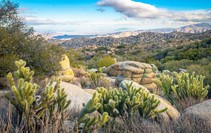
For the love of new adventure
Beautiful landscapes, blue skies and views of Bureau of Land Management - California's public lands! Located in the McCain Valley Resource Conservation Area and among the live oaks of southeastern San Diego County is Cottonwood Campground. The campground offers a tranquil and refreshing experience. It's also an excellent starting point for day hikes, overnight backpacking trips, and equestrian use. (BLM Facebook)
|

National Kindness Day
On National Act of Kindness Day, please take a moment to reach out to a firefighter, police officer, dispatcher, or any emergency services provider to show your gratitude for their dedication to public service. #ThankAFirefighter (BLM Fire Facebook)
|

Restoring your public lands
Staff from our Eagle Lake Field Office launched an aerial assault of sorts last week, as they used a contract airplane to drop more than 9 tons of shrub and grass seed on rugged, inaccessible wildlife habitat burned in last summer's 105,000-acre Beckwourth Complex wildfire in Plumas and Lassen counties. (BLM CA Facebook)
|

Thank you Imperial Sand Dunes staff
Thank you Imperial Sand Dunes staff, they never give up trying to keep our dunes looking good! The dunes season is wrapping up until fall, however, it is not too late to visit for President's Day weekend. Please drive safe! (BLM ISDRA Facebook)
|

Fostering resiliency for western landscapes and communities
By incorporating flexibility into grazing permits through the Outcome-Based Grazing program, we're able to foster both ecological and economic resiliency for western landscapes and communities. In a new film from Intermountain West Joint Venture titled “The Need for Flexibility: Exploring Innovation in a Public Land Grazing System”, the benefits of the Outcome-Based Grazing program are highlighted in more detail. (BLM Facebook)
|
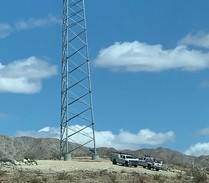
The BLM opens public comment for Morongo Highway 62 communication site project
The Bureau of Land Management is seeking public input on a land use plan amendment to the California Desert Conservation Act for the proposed Morongo Hwy Communication Site. If approved, this project would improve telecommunication and broadband connections for the communities of Morongo and Yucca Valley. The 30-day public comment period will close by March 21, 2022. (BLM CA News Release)
|

California Desert District seeks District Manager
BLM CA has an opening for the California Desert District Manager position. Unique within the BLM, the California Desert District was created to protect the natural, historic, recreational and economic riches of the diverse and scenic California Desert. The district is responsible for protecting and preserving nearly 11 million acres within nine counties. (USAJOBS)
|
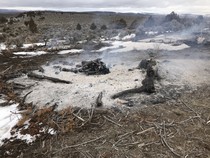
Report out on successful prescribed burning from the Applegate Field Office
Fire crews from the Applegate Field Office successfully completed 200 acres of the Twin Lakes Project prescribed burn, which is about 18 miles southeast of Cedarville, CA. The prescribed fire consisted of piled juniper which was thinned to reduce wildfire dangers and improve habitats. (BLM CA Facebook)
|
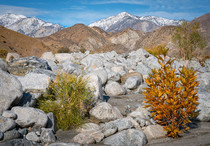
What are you doing this Presidents Day weekend? How about spending quality time on your public lands!
In honor of President's Day, the Bureau of Land Management will waive Standard Amenity fees for everyone on Monday, February 21, 2022. BLM California site-specific standard amenity and individual day-use fees at BLM-managed recreation sites and areas will be waived for the day. Other fees, such as overnight camping, cabin rentals, group day use and use of special areas, will remain in effect. (BLM CA Facebook)
|
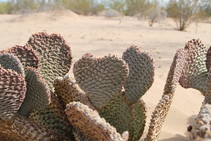
The BLM seeks Desert Advisory Council subgroup applicants by February 28
The BLM California Desert District is seeking applicants who may be interested in serving on any of three subgroups that assist the Desert Advisory Council, a citizen-based advisory committee that develops recommendations for the BLM related to public land management issues. (BLM CA News Release)
|
True or False: The Hopkin's rose nudibranchs utilize their feathery appendages to lure their prey.

A. True
B. False
Photo: Michael Ready, NPS
|
|
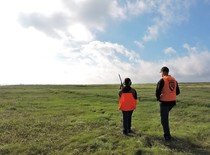
Interior and Agriculture Departments invite nominations for federal council to support hunting, conservation efforts
The U.S. Departments of Interior and Agriculture announced they are opening a nominations period to find qualified individuals to fill current member vacancies in the newly re-established a Federal Advisory Committee to advance wildlife and habitat conservation efforts and to encourage partnership with sporting conservation organizations. (DOI News Release)
|
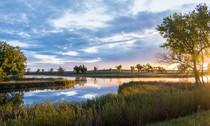
Secretary of the Interior Deb Haaland today established the first-ever Diversity, Equity, Inclusion and Accessibility (DEIA) Council to incorporate these practices into the Department’s work across its many bureaus. (DOI News Release)
|
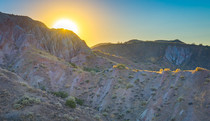
Department of the Interior to solicit nominations for first-ever Secretary’s Tribal Advisory Committee
In remarks at the National Congress of American Indians 2022 Executive Council Winter Session today, Secretary of the Interior Deb Haaland announced that the Department is requesting nominations for Tribal member representatives for the new Secretary’s Tribal Advisory Committee (STAC). (DOI News Release)
|
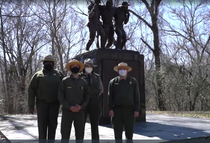
This week at Interior - February 18, 2022
|
|
Question of the Week Answer
If you guessed FALSE you'd be correct! They are used for protection.

The Hopkin’s rose nudibranch (Okenia rosacea) is one of the shell-less gastropods of the sea, collectively known as “sea slugs”. A well-known subgroup of mollusk, the nudibranchs (or “Nudis”, as they are affectionately called), are among the most colorful and captivating creatures in the ocean. Like many nudis, Hopkin’s roses are carnivores, stealing toxins and calcareous spicules (needle like structures) of their prey and placing them into their feathery appendages for protection.
Historically, the range of these nudis extends from Northern Baja California, Mexico up to the lower Oregon coast, including your BLM California Coastal National Monument coastline. Over the last few years, Hopkins’ roses have been seen in surprisingly high numbers.
These nudis get their stunning color from their bryozoan food which contains the compound responsible for the slug’s intense pink hue. Though small, only 2-3 cm long, it’s hard to miss their bright pink, frilly papillae swaying in the water.
Source: NPS
Photos: Michael Ready, NPS
|
|
|
|
News.Bytes is a publication of the Bureau of Land Management in California.
Bureau of Land Management
California State Office
2800 Cottage Way, Suite W1623
Sacramento, CA 95825
(916) 978-4600
Send comments to the News.Bytes Team | Subscribe to News.Bytes | Unsubscribe
|
     
|
|
|